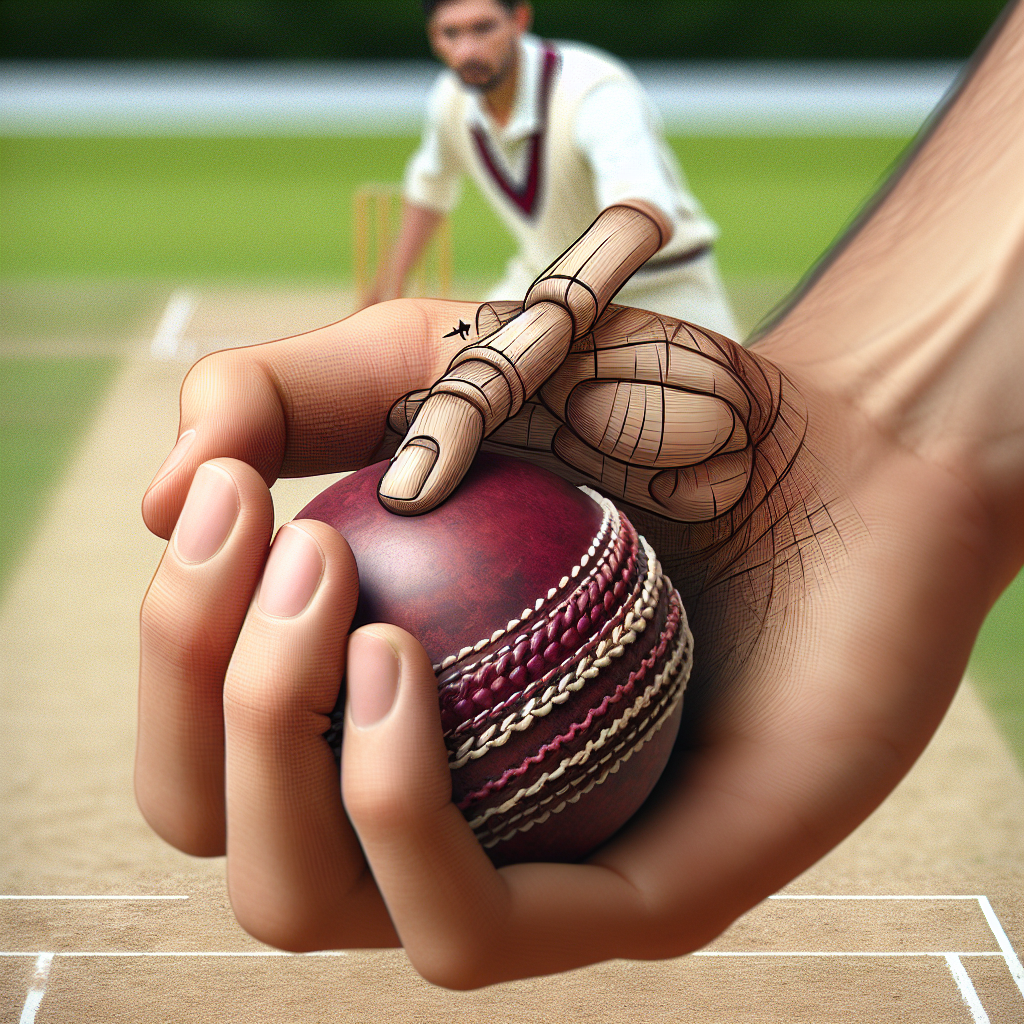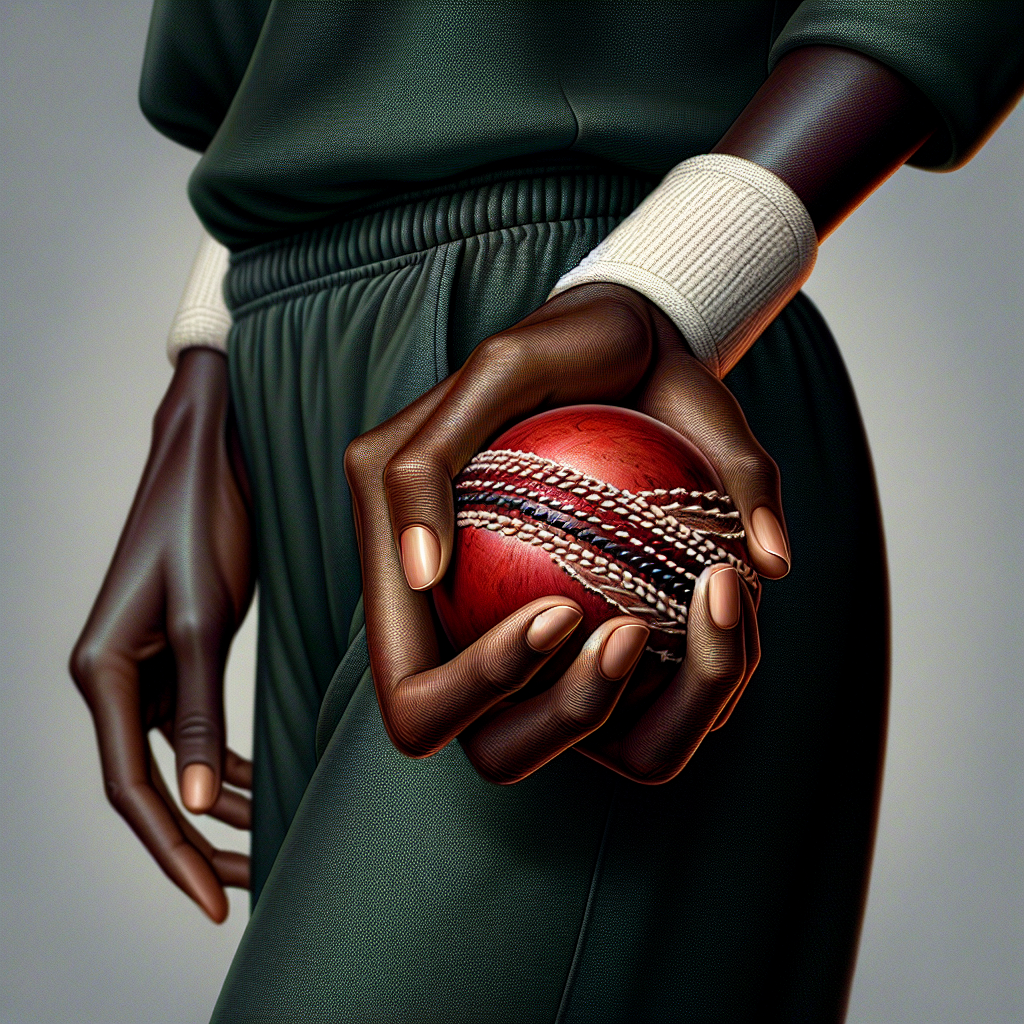Mastering the Seam Bowling Grip: A Comprehensive Guide

Seam bowling is an art that has fascinated cricket enthusiasts for decades. The ability to make the ball move unpredictably off the pitch is a skill that can turn the tide of a match. At the heart of this skill lies the seam bowling grip, a fundamental aspect that every aspiring bowler must master. This article delves into the intricacies of the seam bowling grip, exploring its importance, variations, and techniques to help bowlers enhance their performance on the field.
Understanding the Basics of Seam Bowling
Before diving into the specifics of the seam bowling grip, it’s essential to understand what seam bowling entails. Seam bowling is a technique used by fast bowlers to exploit the seam of the cricket ball. By delivering the ball with the seam upright, bowlers aim to create lateral movement off the pitch, making it challenging for batsmen to predict the ball’s trajectory.
The Role of the Seam
The seam of a cricket ball is the stitched area that divides the two halves of the ball. It plays a crucial role in seam bowling by providing grip and friction against the pitch surface. When the ball lands on the seam, it can deviate in either direction, depending on various factors such as pitch conditions, bowler’s action, and grip.
The Importance of a Proper Seam Bowling Grip
The grip is the foundation of effective seam bowling. A proper grip ensures that the ball is released with the seam upright, maximizing the chances of lateral movement. Here are some reasons why mastering the seam bowling grip is vital:
- Control: A correct grip provides better control over the ball’s line and length, allowing bowlers to target specific areas consistently.
- Seam Position: Maintaining an upright seam position increases the likelihood of the ball deviating off the pitch.
- Variation: A good grip allows bowlers to experiment with different deliveries, such as outswingers, inswingers, and cutters.
Types of Seam Bowling Grips
There are several seam bowling grips that bowlers can use to achieve different effects. Each grip has its unique characteristics and is suited for specific types of deliveries. Let’s explore some of the most common seam bowling grips:
The Basic Seam Grip
The basic seam grip is the foundation for most seam bowling techniques. Here’s how to execute it:
- Place the index and middle fingers on either side of the seam, with the seam running between them.
- The thumb should rest lightly on the seam underneath the ball for support.
- Ensure that the ball is held comfortably in the fingers, not too tight or too loose.
This grip is ideal for delivering straight seamers and is often used by beginners to develop control and accuracy.
The Outswing Grip
The outswing grip is designed to make the ball move away from the batsman. To achieve this, follow these steps:
- Position the seam slightly towards the slips, with the shiny side of the ball facing the batsman.
- Adjust the grip so that the index finger is slightly closer to the seam than the middle finger.
- Release the ball with a wrist position that encourages outward movement.
This grip is effective in conditions that favor swing, such as overcast weather or pitches with grass cover.
The Inswing Grip
The inswing grip is used to bring the ball into the batsman. Here’s how to execute it:
- Position the seam towards the leg side, with the shiny side facing away from the batsman.
- Ensure that the middle finger is closer to the seam than the index finger.
- Release the ball with a wrist position that promotes inward movement.
This grip is particularly useful for targeting the stumps and creating LBW opportunities.
Case Studies: Seam Bowling Masters
To understand the effectiveness of seam bowling grips, let’s examine some renowned seam bowlers who have mastered this art:
James Anderson
James Anderson, England’s leading wicket-taker, is known for his exceptional control and ability to swing the ball both ways. His mastery of the seam bowling grip allows him to exploit even the slightest movement off the pitch, making him a formidable opponent in any conditions.
Dale Steyn
South African fast bowler Dale Steyn is celebrated for his aggressive pace and ability to generate significant seam movement. His grip technique, combined with his athleticism, has made him one of the most successful seam bowlers in modern cricket.
Techniques to Improve Seam Bowling Grip
Improving your seam bowling grip requires practice and attention to detail. Here are some techniques to help bowlers refine their grip:
- Practice with Different Balls: Experiment with different types of cricket balls to understand how grip affects movement.
- Focus on Wrist Position: Pay attention to wrist position during release to enhance seam position and movement.
- Seek Feedback: Work with coaches or experienced bowlers to receive feedback and make necessary adjustments.
Conclusion: The Path to Seam Bowling Mastery
Mastering the seam bowling grip is a journey that requires dedication, practice, and a keen understanding of the game’s nuances. By focusing on grip techniques, bowlers can unlock the potential to move the ball off the pitch and outsmart batsmen. Whether you’re a beginner or an experienced bowler, refining your seam bowling grip can significantly enhance your performance and make you a valuable asset to your team.
In conclusion, the seam bowling grip is not just a fundamental skill but a gateway to mastering the art of seam bowling. By understanding its importance, exploring different grips, and learning from the best in the game, bowlers can elevate their craft and leave a lasting impact on the cricketing world.


